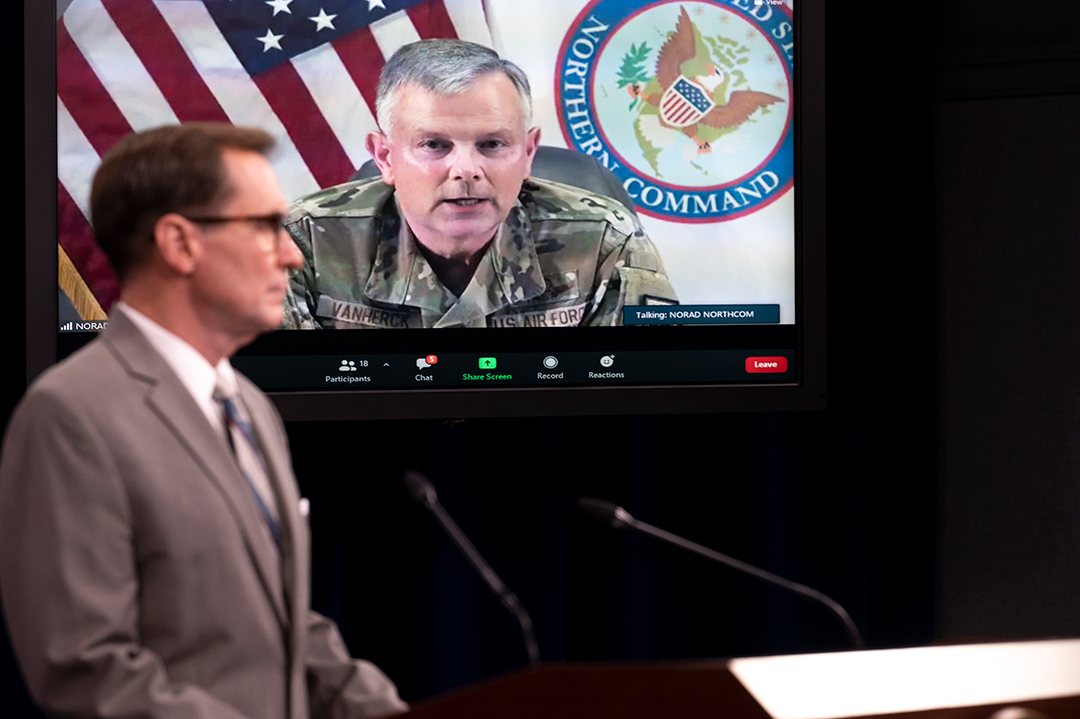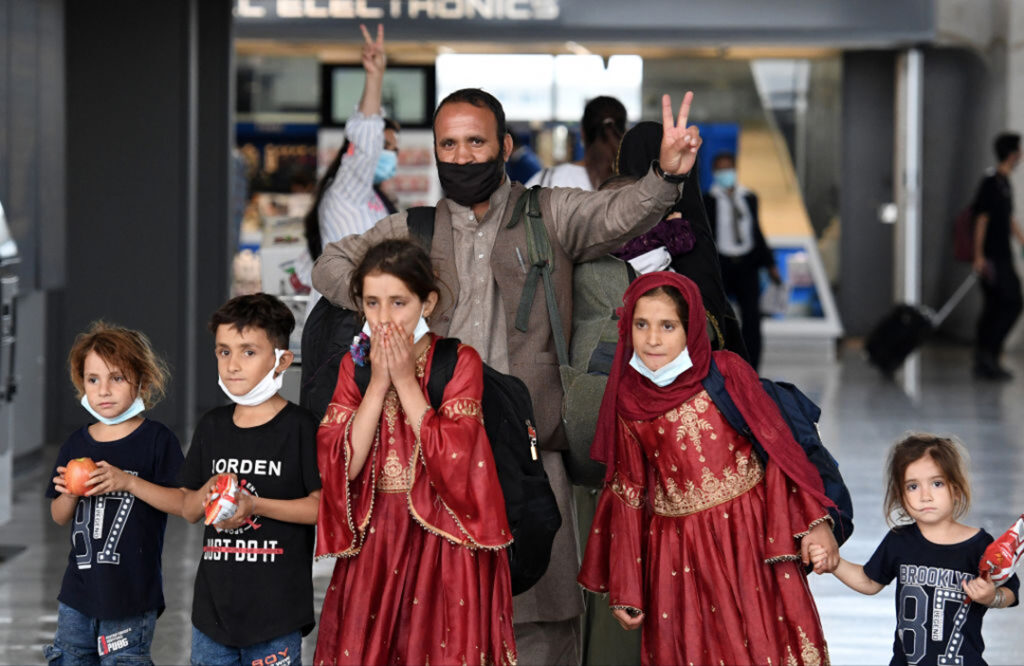THE WATCH staff
U.S. Air Force Gen. Glen D. VanHerck, the leader of U.S. Northern Command (USNORTHCOM), said the military is “prepared to house and feed [Afghan refugees] for as long as it takes” to get them settled as part of Operation Allies Refuge.
Tens of thousands of Afghans who helped U.S. forces during the war in their homeland will receive temporary housing, medical screenings and other services at military bases across the country as the first step in their new lives in the United States, VanHerck said during an August 27, 2021, Pentagon news briefing.
“They’re coming here, starting over with what they bring with them,” VanHerck said.
As of the briefing, there were fewer than 7,000 refugees on U.S. bases, and USNORTHCOM had been tasked to support up to 50,000, VanHerck said. Housing is being established at bases in New Jersey (Joint Base McGuire-Dix-Lakehurst), New Mexico (Holloman Air Force Base),

Texas (Fort Bliss), Virginia (Fort Lee, Fort Pickett and Marine Corps Base Quantico) and Wisconsin (Fort McCoy).
The refugees are entering the U.S. through Washington Dulles International Airport and the Philadelphia International Airport in Pennsylvania, with more sites possible.
USNORTHCOM provides help under the authority of Defense Support of Civil Authorities, which includes operations ranging from staffing U.S. hospitals overburdened by COVID-19 to hurricane relief.
All the Afghan refugees have undergone security screenings before entering the country, VanHerck said. In addition, they are tested for the coronavirus and offered vaccinations, he said.
VanHerck gave a rough estimate of the initial refugee population as being about half male, half female, and about 15% with children.
Afghans who helped in the war effort may be eligible for a Special Immigrant Visa (SIV), which allows for a permanent move to the U.S. with their spouses and children. One program is designed to provide safe haven to those who served as military translators or interpreters, according to CBS News. Another program, which unlike the first will have a limited number of visas, allows Afghans who worked for the U.S. government, its contractors or NATO to obtain an SIV if they meet certain requirements, CBS News reported.
The SIV screening takes about five to seven days, VanHerck said, basing his estimate on what he had learned on one of his base visits. After the refugees are processed at military bases, the International Migration Organization will work with them on relocation, VanHerck said. He said many of the refugees have family in the U.S., while those who don’t will be primarily resettled in locations with Afghan communities. The Afghans also will be connected with U.S. refugee resettlement organizations, according to Reuters.
VanHerck said that during their stay on military bases, the visa applicants also are provided with religious services, recreation and culturally appropriate food. Local community organizations are providing coloring books, educational materials and sports equipment to the children. (Pictured:
Afghan refugees arrive at Washington Dulles International Airport.) “It’s really a privilege to be executing this mission for those that have helped us for oftentimes, a couple of decades,” VanHerck told reporters. “We continue to look forward to supporting them.
We’re prepared to do this as long as it takes to ensure that we get them settled here back in the United States of America.”

